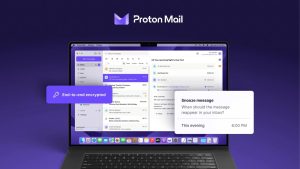It’s time we take a deep dive into Google Analytics 4, specifically honing in on a powerful yet underutilized feature: offline conversion tracking. By the end of this insightful expedition, you’ll understand what offline conversion tracking is and how to track offline conversions, use them, and get the most out of them to boost your marketing game.
Why does this matter? Because in the current business landscape, offline conversions – be it a sale at your brick-and-mortar store or a phone call that turns into a business opportunity – are crucial. However, these offline conversions might slip through your analytics net without the proper tracking mechanism.
What is Offline Conversion Tracking?
Let’s dive into the heart of the matter: What is offline conversion tracking? Offline conversion tracking is a sophisticated tool that enables marketers to track and understand the entire customer journey — from the first online interaction to the final offline conversion. Think of it as the roadmap that guides you through the labyrinth of today’s multichannel commerce landscape.
Picture this scenario: A prospective customer stumbles upon your online ad. Intrigued, they decide to check out your physical store and ultimately make a purchase. This critical event — an offline conversion — has its roots in online interaction. Offline conversion tracking is the secret sauce that helps you trace these offline transactions back to their online origins, thereby offering a complete view of your customer’s journey.
So, why should we be concerned about offline conversion tracking? The answer is simple: It’s not merely a buzzword. Instead, it’s a groundbreaking technique that transforms our understanding of the customer journey. It’s a vital component in your marketing strategy and plays a decisive role in steering your business toward success.
How Does Offline Conversion Tracking Work in GA4?
Let’s shift gears and discuss the mechanics of offline conversion tracking in GA4. Think of this process as fitting together pieces of a jigsaw puzzle, each piece being a crucial bit of data that connects online user interactions with offline conversions.
At the core of offline conversion tracking in GA4, we have a process called ‘data import.’ But how does it work? Well, one advantage of GA4 is that when a user interacts with your website, a unique identifier is assigned to them — this could be the GA client ID or User ID. This identifier is like a digital fingerprint, unique to each visitor.
Now, here’s where offline conversion tracking comes into play. Suppose a user, after engaging with your online content, decides to purchase at your physical store. You record this event (the offline conversion), capturing the unique identifier and conversion data. Later, you upload this information to GA4.
What happens next might feel like magic, but it’s all about the power of data analysis. GA4 matches the uploaded IDs with the corresponding online users, allowing you to precisely identify which of your online visitors resulted in offline conversions.
But it’s not just about knowing who made a purchase. Offline conversion tracking in GA4 helps you unravel the specifics of the journey that led to that purchase. Which pages did the user visit? Which products caught their attention? Did they interact with any particular online ad or marketing campaign? All these details can be mapped and analyzed, giving you a wealth of insights into your marketing performance and customer behavior.
Benefits of Using GA4 Offline Conversion Tracking
With offline conversion tracking in place, you gain invaluable insights that can catapult your marketing strategy to new heights. But what exactly are these benefits? Let’s break them down.
Identifying the True Impact of Marketing Campaigns
Connecting the Dots: Offline conversion tracking serves as your bridge, connecting your online marketing strategies with offline results. Doing so reveals the entire story behind your campaigns, which isn’t limited to online interactions.
Holistic View: This practice gives you a panoramic perspective of your campaigns’ impact on sales. With this bird’s eye view, you can see the full range of your campaign’s influence – both in the digital and physical worlds.
Guiding Decisions: Equipped with these key insights from offline conversion tracking, you’re ready to make data-driven decisions that can steer your marketing strategies in the right direction. Remember, in the realm of marketing, knowledge is power.
Optimizing Marketing Strategies for Greater ROI
Fine-Tuning Campaigns: With a deeper understanding of your offline conversions, you can refine your marketing campaigns for maximum efficiency. It’s like tuning a guitar to the perfect pitch; a slight adjustment can make all the difference.
Efficient Resource Allocation: Knowing which online strategies drive offline sales allows you to put your resources where they matter the most. This way, every penny you spend is directed toward strategies that bring in real offline conversions.
Boosting ROI: The end result? A significantly improved return on investment (ROI). With offline conversion tracking, you’re not just spending smarter, but you’re also earning more.
In essence, offline conversion tracking is a powerful tool that lets you see the bigger picture, make informed decisions, optimize your strategies, and elevate your ROI. It’s about transforming raw data into meaningful insights that can propel your business to new heights. So, don’t just stop at the edge of the digital realm; dive deeper and explore the vast potential of offline conversion tracking.
Setting Up Offline Conversion Tracking in GA4
Now it’s time to set up your offline conversion tracking.
Crafting a Measurement Plan for Offline Conversion Tracking
The first step is to formulate a detailed measurement plan when starting with offline conversion tracking, which isn’t a step to be overlooked as it lays the groundwork for your tracking efforts.
Begin by clearly defining your goals and key performance indicators (KPIs). Consider the specific outcomes you wish to achieve. Are you aiming to increase in-store sales? Do you want to enhance customer engagement at your physical locations? Or are you focused on boosting customer loyalty program sign-ups?
Once you’ve set your goals, decide which offline conversions are most important to track concerning these goals. For instance, if you’re focusing on increasing in-store sales, you might track offline purchases made by online users. Remember, the offline conversions you track should provide valuable data that ties back to your goals.
The measurement plan acts as your roadmap, ensuring you’re collecting relevant and actionable data for your business. It ensures your offline conversion tracking efforts stay on course and provide the insights you need to evaluate and optimize your marketing strategies.
Step-by-Step Guide to Offline Conversion Tracking in GA4
Follow these steps to set up offline conversion tracking in GA4:
Step 1: Set Up a Conversion Data Set in GA4
In Google Analytics 4, a conversion data set acts as a container for your offline conversion data.
Navigate to your GA4 property.
Click on “Admin” in the lower-left corner.
Under “Property,” select “Data Import.”
Click on “+ Create data set.”
Choose the “Conversion” type, and click “Continue.”
Give your data set a meaningful name, such as “Offline Conversions.”
Make sure to enable the “Allow manual uploads and allow Google Analytics to use data to improve services” option. Click “Next.”
At this point, you’ve created a data set that can hold your offline conversion data.
Step 2: Capture User ID or GA Client ID at the Point of Offline Conversion
Now that you have a place to store your offline conversions, you need to start capturing them as they happen, which involves capturing unique identifiers like the User ID or GA Client ID. You might use a CRM or Point of Sale system to help capture this data.
At the point of sale or customer interaction, capture the User ID or GA Client ID. Your website or app should have previously assigned these IDs and stored them in your CRM.
Also, capture the interaction’s timestamp and any other pertinent data (product details, sales amounts, etc.).
Step 3: Upload Your Collected Data to GA4
Once you’ve gathered your offline conversion data, it’s time to upload it to GA4.
In your GA4 property, navigate to “Admin > Data Import.”
Find the data set you created in Step 1, and click “Manage Uploads.”
Click “+ Upload file” and select the file containing your offline conversion data.
You’ll need to repeat this process as you continue to gather offline conversions. It’s a good idea to upload data periodically, such as once a week or once a month, to keep your data fresh and relevant.
Remember, each business will have unique requirements for offline conversion tracking. The complexity of the setup can vary, but the key elements remain: creating a conversion data set, capturing offline conversions, and uploading this data to GA4. Once these steps are completed, GA4 will match these offline conversions to the online users, providing a comprehensive view of your marketing efforts.
Ensuring Data Accuracy and Consistency
Data is the lifeblood of offline conversion tracking. A clear and accurate picture of your data can distinguish between a successful marketing strategy and a missed opportunity.
It’s critical to capture the correct User ID or GA client ID at the point of offline conversion to ensure data accuracy. If this information isn’t accurate, the subsequent data uploaded to GA4 could lead to flawed insights.
Maintaining data consistency is just as important. To illustrate, capturing your data in different formats across various channels could result in a disjointed understanding of your customer’s journey. Hence, it’s crucial to standardize the data format across all channels.
One of the simplest ways to maintain data consistency is by scheduling regular reviews and cleanups, which involves checking the data set for any inaccuracies, outdated entries, or duplications and rectifying them.
Getting Professional Help to Track Conversions Offline
Let’s face it, learning how to track offline conversions in GA4 can often feel quite complicated. Tackling concepts like offline conversion tracking and meticulously working on integrating online and offline marketing strategies can sometimes be overwhelming. That’s precisely where we at Data Fidelity come in.
As a team of experienced professionals specializing in this domain, we thrive on guiding businesses through the complexities of digital marketing. We offer assistance with offline conversion tracking and provide strategic insights that help create a robust, well-integrated marketing plan.
With Data Fidelity at your side, you can rest easy knowing your marketing efforts are being maximized online and offline. We eliminate the confusion, helping you transform data into actionable insights, enhancing your customer experience, and ultimately driving your business growth. Ready to elevate your business and unlock the full potential of your marketing campaigns? Contact Data Fidelity to learn more about our offline conversion tracking and SEO services today.




